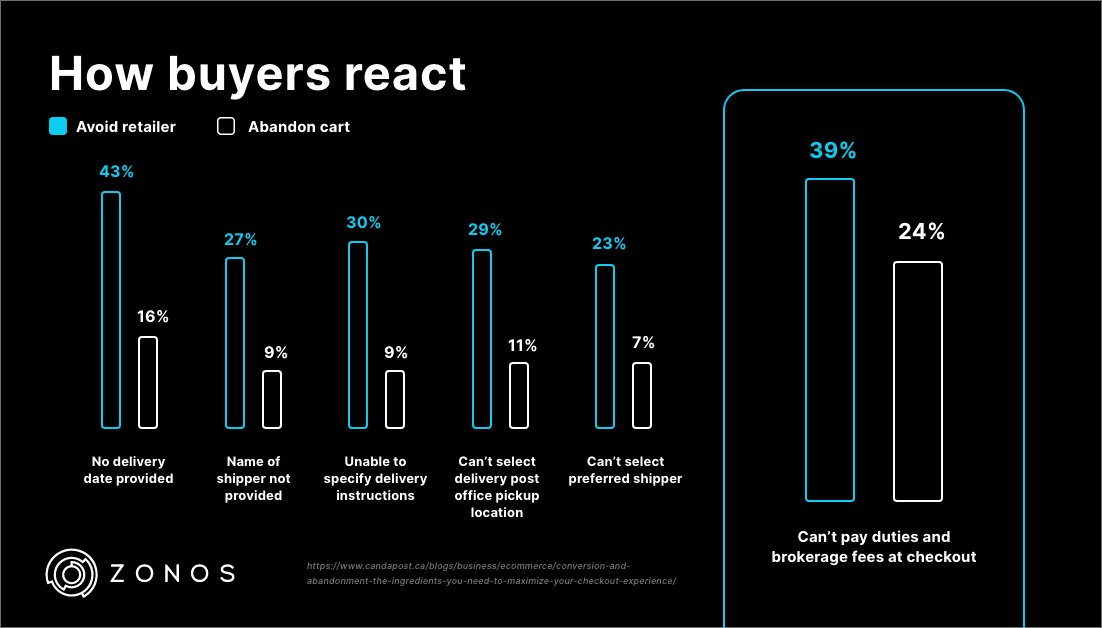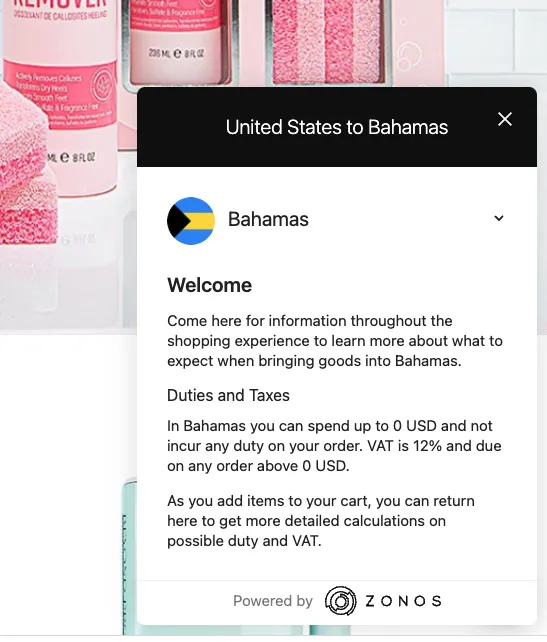Understanding cross-border ecommerce: 3 things you need to know
With 70% of online shoppers purchasing from foreign websites, it is the perfect time to explore cross-border ecommerce. Whether you have already expanded your business into international markets, are planning to, or are not sure if it is the right option for you, keep reading. In this article will discuss three major aspects of global ecommerce that may help you as you expand your business internationally or convince you it’s time:
- The cross-border opportunity
- The pain points of international trade
- Solutions for successful international ecommerce
1. The cross-border opportunity
Most people are generally hesitant about taking on the challenge of adjusting their site to cater to international customers. The whole thing can seem a little overwhelming and difficult; however, international customers are hard to ignore once you realize the major financial opportunity that exists in cross-border commerce. Let’s put the opportunity into perspective by looking at the U.S. market as an example.
If your business is located outside of the U.S. (e.g. Germany), you may be thinking, “Why would U.S. shoppers want to shop from foreign companies when ecommerce is booming in their country and they have every reason to shop locally?” Well, about half of U.S. shoppers make cross-border purchases. This is due to several factors, such as the high de minimis value and absence of import tax in the U.S. The bottom line is that half of the second-largest ecommerce market in the world shops internationally, and your business is missing this potential revenue if it’s not set up to handle cross-border shoppers.
Now let’s swap the scenario. If your business is in the U.S., and you are only open to the local market, you are also missing out. About 85% of the world’s purchasing power is outside of the U.S.
Yes, 85%. If you are a U.S. business or retailer only available to those in the U.S., you are denying yourself the significant potential revenue that cross-border expansion holds for you.
You know the opportunity. So you may as well familiarize yourself with the obstacles your business could face with international ecommerce.
2. The pain points of international trade
International trade compliance
Every government has laws that govern the process for goods entering their country, also referred to as imports. Whether through tax schemes, labeling requirements, products restrictions and prohibitions, or e-invoicing requirements, it is important to stay compliant with countries’ regulations to ensure a smooth customs clearance process. This, in turn, will result in a positive international customer experience.
See Zonos industry guides on cross-border compliance and Landed Cost Guarantee that manages country compliance for your business.
Package abandonment
Many times, a package will arrive and the consumer will refuse it. Why? If a shopper does not have experience making international purchases, they are likely unaware of the fees that make up a landed cost. Therefore, when the carrier presents them with a bill for duties, taxes, and any other applicable fees upon delivery, the consumer may be shocked that they have to pay this additional bill, upset that they were not informed ahead of time, and unwilling to pay it. As a result, you have likely lost them as a customer.
Even worse, if the customer demands a refund and wants to return the package, you have not only lost them as a customer but will lose the money from the sale. Then you will have to decide if you want to pay an additional fee to export it back to you from the consumer’s country, or simply abandon the package. Either way, the loss of product, sales, and customers, and drain on internal resources will quickly add up. Not to mention, package abandonment is likely to happen often if shoppers are unaware of landed cost fees.
Delivery timing
International shipments can take a while to reach your consumers abroad. Though the delivery may be out of your hands once you have sent an order, your business may still receive the blame for a negative customer experience due to “late” delivery. It’s important to manage expectations and be as transparent as possible (more on this below) to prevent blame or premature complaints of lost packages.
Cart abandonment
Shoppers abandon their shopping carts or choose not to shop with a retailer for many reasons, including not seeing duty and tax included in the order total at checkout, the absence of a delivery estimation or carrier/service level at checkout, and the inability to specify delivery instructions. All of these may prevent potential customers from transacting.
Here’s a representation of how customers react to the absence of delivery details and options and landed cost quotes:

Let’s take a look at the solutions to these pain points.
3. Solutions for successful international ecommerce
As briefly mentioned, many of the issues that come with cross-border trade are out of your hands, which is why the solutions to these problems fall under one broad solution…
Managing expectations and creating trust through transparency
You can manage expectations and create a smoother customer experience in the following ways (which will be explained below):
a. Delivery options and details
b. Landed cost (duties, taxes, and fees) transparency
c. Welcome for international customers
a. Delivery options
It is important to offer several shipping options for your customers to choose from at checkout. International shipping tends to take longer, so it is important to offer flexibility. Displaying these options with the estimated delivery times and costs associated with each provides transparency and manages your foreign customer’s expectations. Having a choice between low cost and slower delivery and higher cost with faster delivery can change the decision from “Is this too expensive?” to “How soon do I want it?”.
If consumers see that these delivery times and costs are associated with the carrier and they choose an option, your business is less likely to get a bad rap for slow delivery.
Zonos Landed Cost and International Checkout allow you to display all of your available shipping options.
b. Landed cost transparency
Remember, no customer wants to be surprised with an additional bill when they receive their package. Even if the customer sees this extra invoice coming, it is typically more convenient for them to pay the entire cost or at least have a good estimate of the total bill, ideally at the time they checkout on your website.
The solution is to calculate and collect the full landed cost at checkout, and use your carrier’s bill sender option to have the duties and taxes billed back to you. That way, the customer never has to pay an additional fee. Everything is paid for upfront.
Zonos Landed Cost and International Checkout allow for the calculation and prepayment of duties and taxes at checkout.

c. Welcome international customers
Many times, when a customer visits a foreign website, they are discouraged because they cannot tell if the business caters to shoppers from their country. So how can you make it obvious? Have a greeting set up for them in their language. Make them feel welcome and assured that they are in the right place. You can even take it a step further; manage expectations with Zonos Hello.
Hello lets the shoppers know that you accept orders to their country and even provide information about duty and tax specific to their country [as pictured below], which gives them an idea about additional costs right off the bat. Hello also uses currency conversion to display your prices in your international shoppers’ currency.

Don’t stop there. Reassess regularly.
Let your peers and willing foreign customers go through your website’s international shopping experience to give you feedback that will help you improve. Then review your processes and global customer experience annually.
In short, don’t be intimidated by the challenges that you may face in setting up your website to handle international trade and fix the international customer shopping experience issues that exist. The global markets are too big an opportunity to pass up on, especially when there are ways to easily solve these problems. Add in Zonos’ cross-border technology including total landed cost calculations, and international feels a lot more like domestic, for you and your customers.